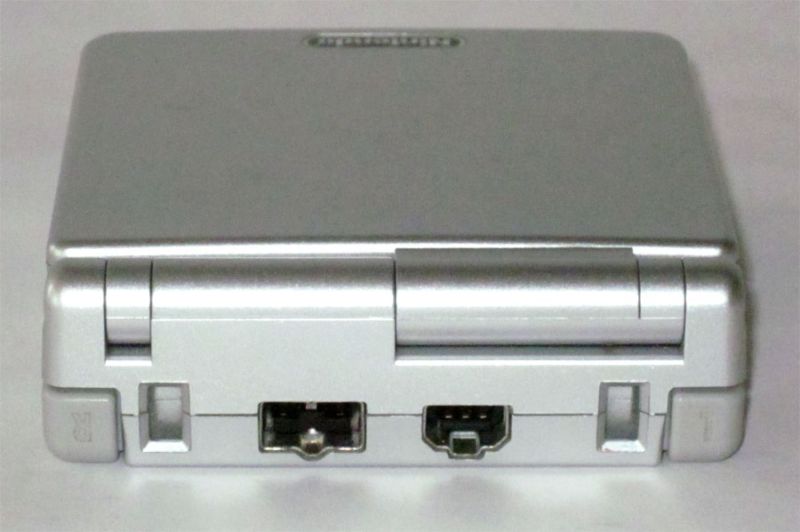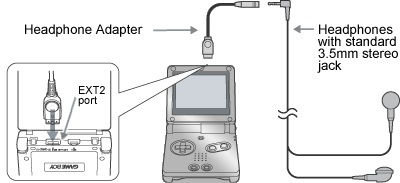
A leading technology company announces the next in its successful and long-standing line of handheld hardware. The new update sports plenty of long-awaited features, including an improved screen and a better battery. But it also includes one major omission: the standard 3.5mm headphone jack, which had been included on all of its portable products until this point, has been replaced by a proprietary standard. Many in the press are livid, and consumers largely react with confusion, but many shrug it off and decide to buy the product anyway.
This introduction could obviously describe the current brouhaha surrounding the release of the headphone jack-free iPhone 7 and 7 Plus. But you may not remember that it also describes Nintendo's release of the Game Boy Advance SP way back in 2003.
Nintendo's mid-generation revamp of the original Game Boy Advance didn't improve on the internal processing power of the core system. It didn't support any games that weren't also supported by 2001's standard Game Boy Advance. Still, the GBA SP drew interest as the first Game Boy to sport an internal battery pack (boasting 10 to 18 hours of continuous play) and the first to include a frontlit screen, for playing in dark rooms. It also sported a trendy flip-top design that protected the screen when not in use and made the unit easy to fit in a pocket.
But much like the iPhone 7, the GBA SP did away with the headphone jack that had been standard in the hardware line up until that point. To use headphones with the GBA SP, you had to buy a $5 dongle—not included with the $100 system—to plug into the EXT2 port, which was also used for charging the system (there were also custom-made headphones that plugged into the EXT2 slot directly). If you wanted to charge and listen to headphones at the same time, you had to invest in an awkward third-party solution, which should sound familiar to iPhone 7 watchers.

You want dongles? Nintendo's got dongles...
When questioned about the omission, Nintendo said the headphone jack was removed so it could pack the GBA SP's internal hardware into the system's relatively small case (another "courageous" answer that will sound familiar to Apple watchers). iFixit's teardown shows just how packed the tiny GBA SP case is, and at least one modern modder was only able to fit a new headphone jack in there by removing the existing link cable port. Still, you could argue that making the unit a few millimeters wider or thicker would be worth it for the support of such a popular audio standard.
Regardless, the reaction to the GBA SP's lack of a headphone jack in many corners of the press presaged the similar outrage surrounding the iPhone 7's lack of a headphone jack today. The section from Eurogamer's review quoted in full below probably wins the award for most righteous outrage by packing six "whys" into a single sentence:
What more could you want? Well, a bloody headphone socket would've been nice, for starters. Unbelievably, after creating one of the finest pieces of gaming design known to man, Nintendo go and fleg (Flob, hawk, gob, spit) in our beer and forget to add one of the most essential parts of any portable gaming device. Apparently Nintendo will be selling a separate headphone port, that will plug into the Ext 2 port, but has yet to announce how much this will cost.
Why Nintendo, why why why why why? The speaker is just as tinny and pathetic as the GBA, and thus if you have any intention of playing a game with the sound on while in the presence of human beings around, you'll know that you'll get that glare. Try the same thing on a train or a plane (or better still, in a library) and your life won't be worth living. Headphone socket. Where the hell is it?
A pair of Majesco-branded headphones designed to work only with the GBA SP.
Rage-filled reactions were easy to find in online gaming message boards as well. "Seriously... How can you have a portable gaming device and not have a way for you to use a pair of headphones with it?" asked one commenter on the Rage3D forums. "If it ain't broke, as they say, don't rip it off and put in something else—unless, of course, you're a soulless money-grubbing corporate monolith who wants to squeeze an extra $10 out of the loyal customers who just want what functionality they had before," Ars commenter Polyester wrote in our own thread on the topic.
Others were willing to downplay the omission, if not fully forgive it. "If Nintendo can save space, make the unit smaller, and still allow people to connect their headphones if they want, then I’m almost happy," Nintendo World Report wrote in a hands-on preview just before the launch.

While Apple can probably draw some lessons from the GBA SP's headphone removal, the situations aren't exactly the same. As important as headphones are for playing many Game Boy Advance games in public, Nintendo's handheld wasn't used for phone calls, music, podcasts, and the myriad other smartphone tasks for which headphones are often essential. On the other hand, the GBA SP existed before Bluetooth headphones were a relatively cheap and widespread alternative to the wired standard. And Apple includes both Lightning headphones and a Lightning-to-3.5mm adapter in the box with the iPhone, which ought to ease the transition for many.
In any case, the lack of a headphone jack doesn't seem to have hurt the GBA SP much in terms of market impact (though the lack of any serious competition before 2005's PlayStation Portable may have something to do with that, too). The revamped system sold 43.52 million units worldwide, according to Nintendo, representing over half of all Game Boy Advance units ever made. Early pre-order sellouts for the iPhone 7 Plus model suggest a lot of smartphone buyers don't think the missing headphone standard is a dealbreaker either.
Still, following the GBA SP, Nintendo didn't develop a long-standing aversion to the standard headphone jack. The Game Boy Micro, released in 2005, managed to squeeze in the standard headphone jack despite a massive decrease in size from the GBA SP (a squint-inducing tiny screen helped on this score). Our own review of the Micro noted this inclusion as "a huge relief to a lot of people out there" and something "Nintendo should have been doing from the very beginning." A headphone jack has also been present in every single unit on the subsequent Nintendo DS line as well.
That has made the GBA SP a historical oddity that was, for over 13 years, probably the most famous case of a device maker purposely doing away with the decades-old headphone jack standard. With the iPhone 7 definitively taking that crown, now is a good time to remember that this is a road that has been walked before.